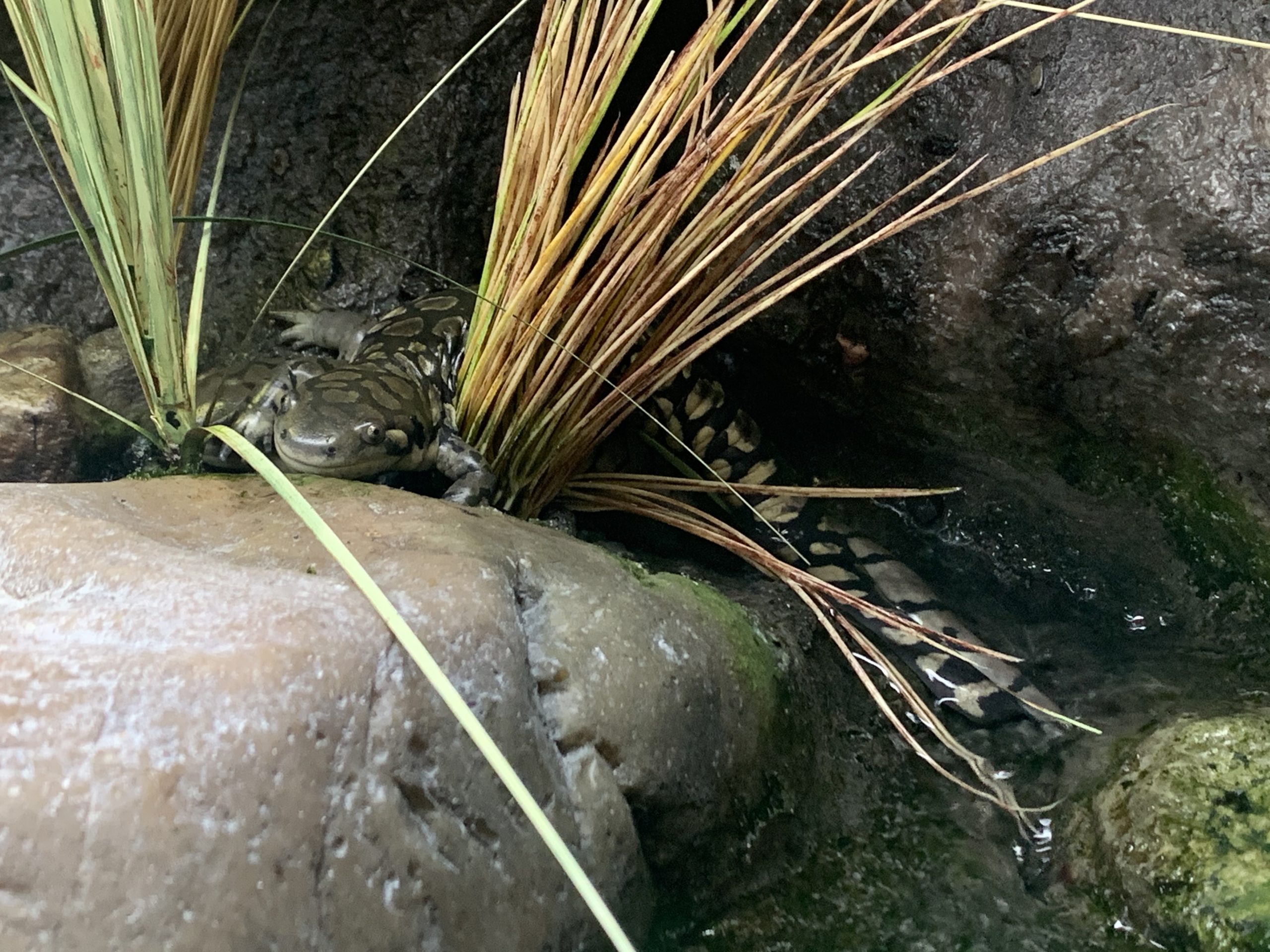By Sarah Cubells
When learning about the iconic species of Greater Yellowstone, elk, moose, bison, bears, and the many spectacular bird species are often the center of discussion. Personally, I’ve rarely heard about the few amphibian species that are native to this region. But these species are actually a critical part of both the terrestrial and aquatic ecosystems. Many predators, like sandhill cranes and great blue herons, eat amphibians, and amphibians prey on smaller vertebrate and invertebrate species. Amphibians are excellent indicators of environmental change because of their sensitivity to disease, drought, and the introduction of non-native species.
The western tiger salamander, also known as the barred tiger salamander, is one of the few native amphibian species in East Idaho, and the only salamander found in Yellowstone National Park. They are one of the largest species of salamander in North America. Adults can reach up to nine inches long from nose to tail. They breed in ponds and fishless lakes. Their larvae are fully aquatic and sport large feathery gills behind their head. The larvae can reach sizes comparable to the adults.

The western tiger salamander is a type of mole salamander, a group popularized because of the axolotl (and if you haven’t seen an axolotl, I recommend looking up a photo! They are adorable!) Tiger salamanders are nocturnal and spend long periods of time burrowed underground. They have been known to dig their own burrows, unlike other salamanders. After heavy rains, however, tiger salamanders can be seen out and about.
These amphibians can live for 14 years or more! They are believed to have suffered some population decline over several decades due to habitat loss, and possibly due to the introduction of non-native predatory fish in some areas. More research into these amphibians and their population would likely be very telling for conservation efforts—Both for their survival and the prosperity of the ecosystem as a whole.
